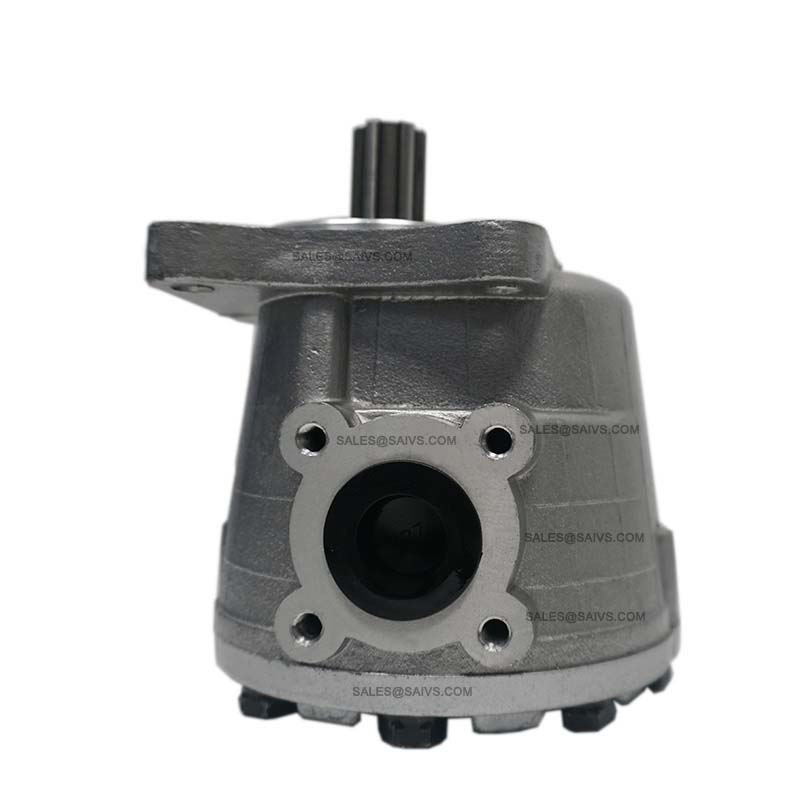Gear Pump Selection Principles and Basic Conditions
According to the principles and basic conditions for selecting Gear Pumps, the specific operation steps are as follows:
1. Determine the Type of Pump
Based on the layout of the installation, terrain conditions, water level conditions, and operating conditions, choose the appropriate type of Gear Pump such as horizontal, vertical, or other types (e.g., inline, submersible, sump, non-clogging, self-priming, gear type, etc.).
2. Determine the Nature of the Liquid Medium
Select the suitable type of gear pump based on the properties of the liquid medium, such as clean water gear pumps, hot water gear pumps, oil gear pumps, chemical gear pumps, corrosion-resistant gear pumps, impurity gear pumps, or non-clogging gear pumps. Gear pumps installed in explosion-prone areas should be equipped with explosion-proof motors appropriate for the explosion area rating.
3. Determine the Suction and Head Characteristics of the Pump
Based on the flow rate, choose between a single-suction gear pump or a double-suction gear pump; based on the head, choose between a single-stage gear pump or a multi-stage gear pump, high-speed gear pump or low-speed gear pump. Single-stage gear pumps generally have higher efficiency than multi-stage gear pumps, so single-stage gear pumps should be preferred when conditions permit.
4. Determine the Specific Model
After determining the series of the pump, based on the maximum Flow rate (usually taken as 1.1 times the normal flow rate), and considering the head parameter with a 5%-10% margin, determine the specific model from the type spectrum or series characteristic curves.
5. Correct the Working Point
After determining the model of the gear pump, for water pumps or pumps conveying similar mediums to water, refer to the product catalog or sample to check if the normal working point falls within the preferred working area of the pump.
6. Performance Conversion for High Viscosity Liquids
For gear pumps conveying liquids with viscosities greater than 20 mm²/s, the characteristic curve obtained from water tests needs to be converted to the performance curve corresponding to the specific viscosity, with particular attention to the suction performance and input power calculations.
7. Determine the Number of Pumps and Backup Rate
Generally, only one gear pump is used during normal operation. A large gear pump is more efficient than two smaller gear pumps working in parallel, but in the following situations, two gear pumps in parallel can be considered:
The flow rate is very large and one pump cannot meet the requirements.
When a 50% backup rate is needed, two smaller gear pumps can be used with one as a backup.
For large gear pumps, two pumps meeting 70% of the flow requirement can be used in parallel, without needing a backup pump.
For pumps operating continuously for 24 hours, three pumps should be used: one in operation, one as a backup, and one under maintenance.
8. Submit Basic Conditions for Selection
Customers can submit their basic conditions for selection, and the pump manufacturer can perform the selection or recommend a more suitable gear pump product. If the design institute has already determined the pump model when designing the equipment, it should be configured according to the design institute's requirements.
When selecting a gear pump, consider the working pressure, flow rate, speed, fixed or variable displacement, mode of variation, volumetric efficiency, overall efficiency, lifespan, type of prime mover, noise, pressure pulsation rate, and self-priming ability. Some of these factors are included in the product samples or technical data, and it is important to study them carefully. If there are any uncertainties, it is best to consult the relevant selection handbook from a reputable gear pump manufacturer.
Saivs brand
- Cavity 08-2 08-3 08-4
- AZPB series Rexroth Gear Pumps
- AZPJ series Rexroth Gear Pumps
- Single drum 10000/11000/12000 lbs pounds 5T 5000kg hydraulic winch
- Food and packing machine haydraulic cylinder
- Gear pumps series NSH50M
- Single Mast High Altitude Working Vehicle
- Rexroth Hydraulic pump A7VO 28 55 80 107 160
- AA6VM/A6VM Piston Variable Hydraulic Motor
- A10VSF28 Rexroth Hydraulic Pump Parts
